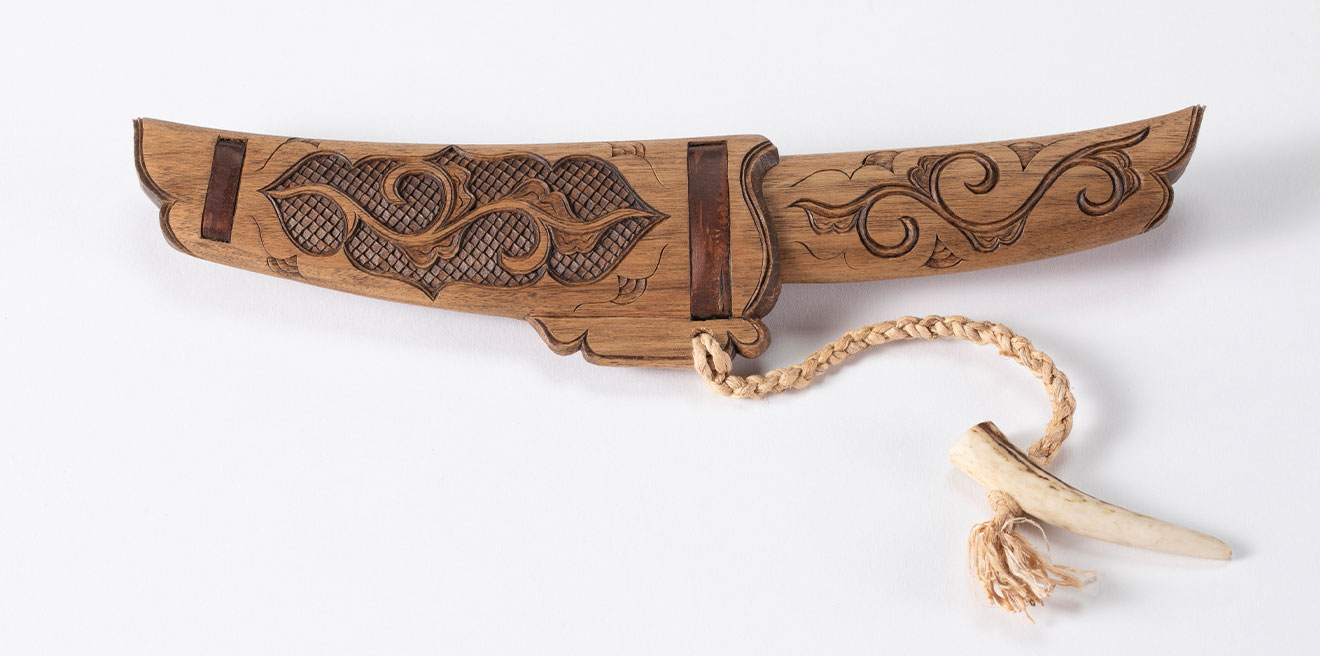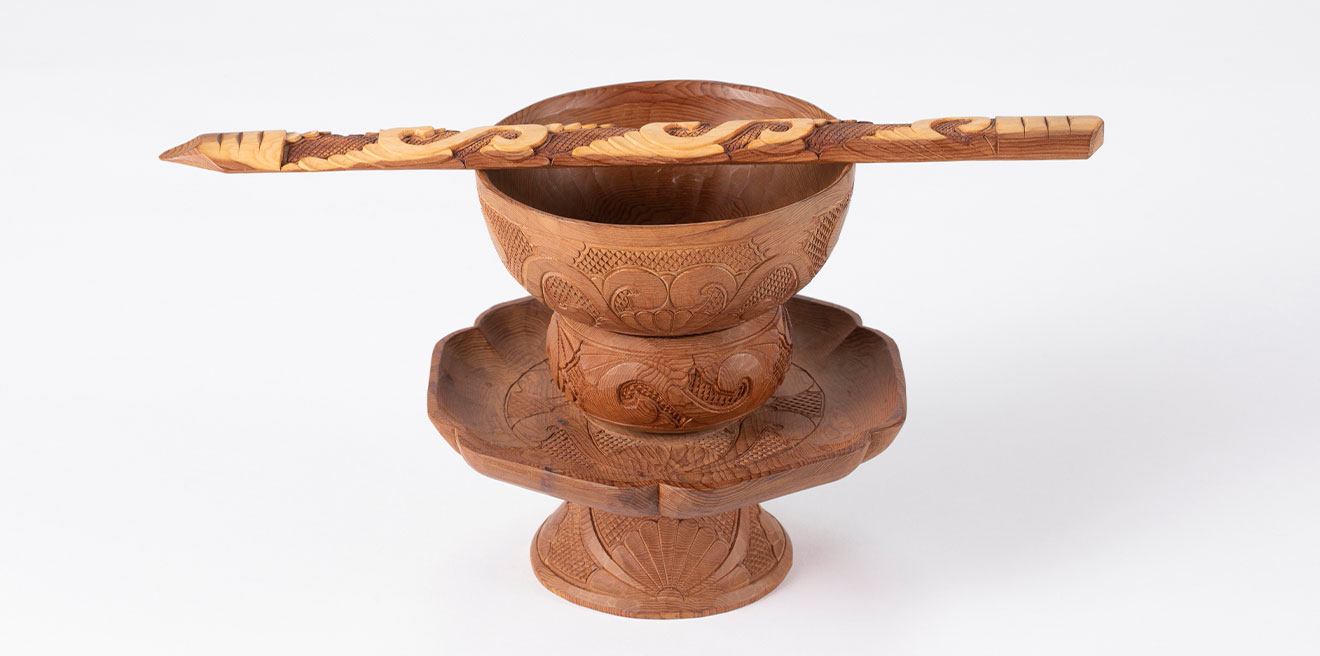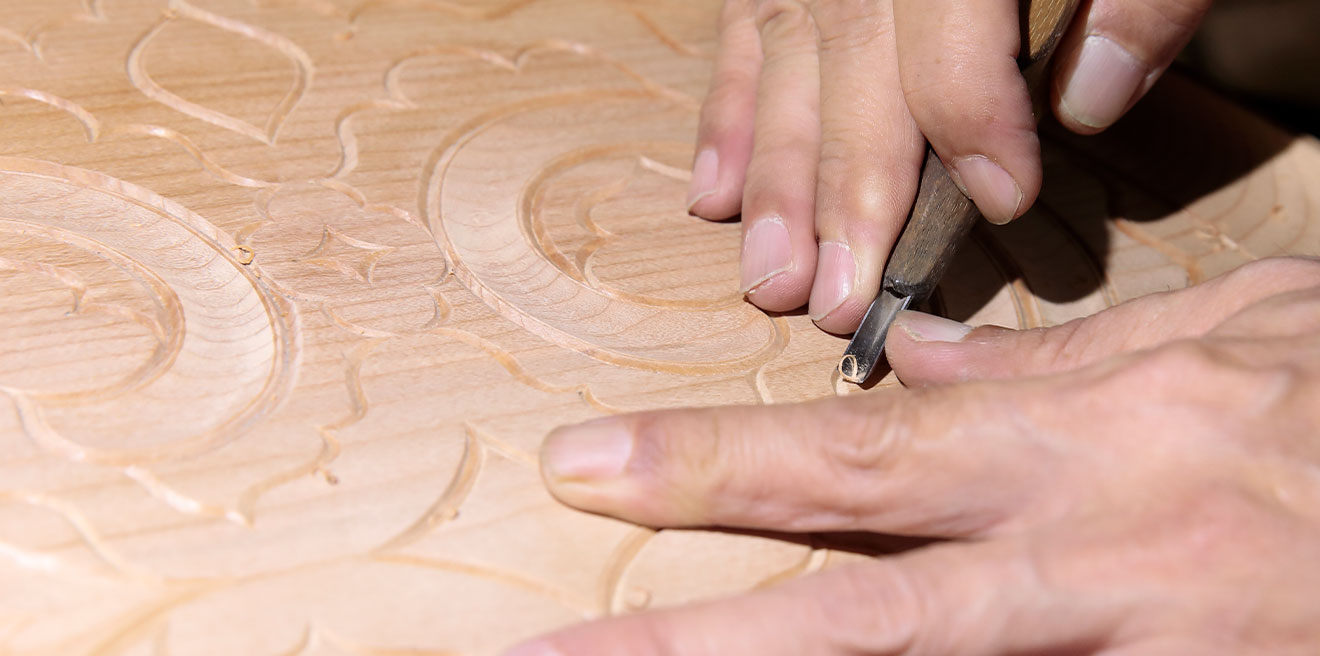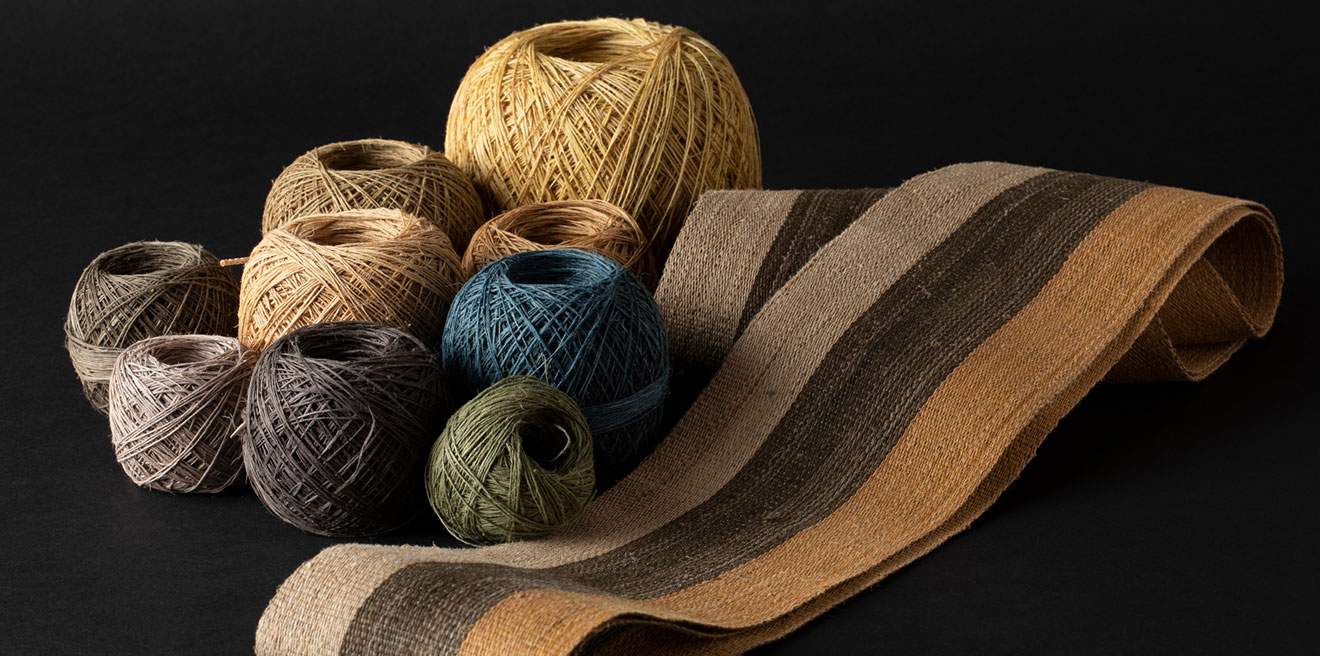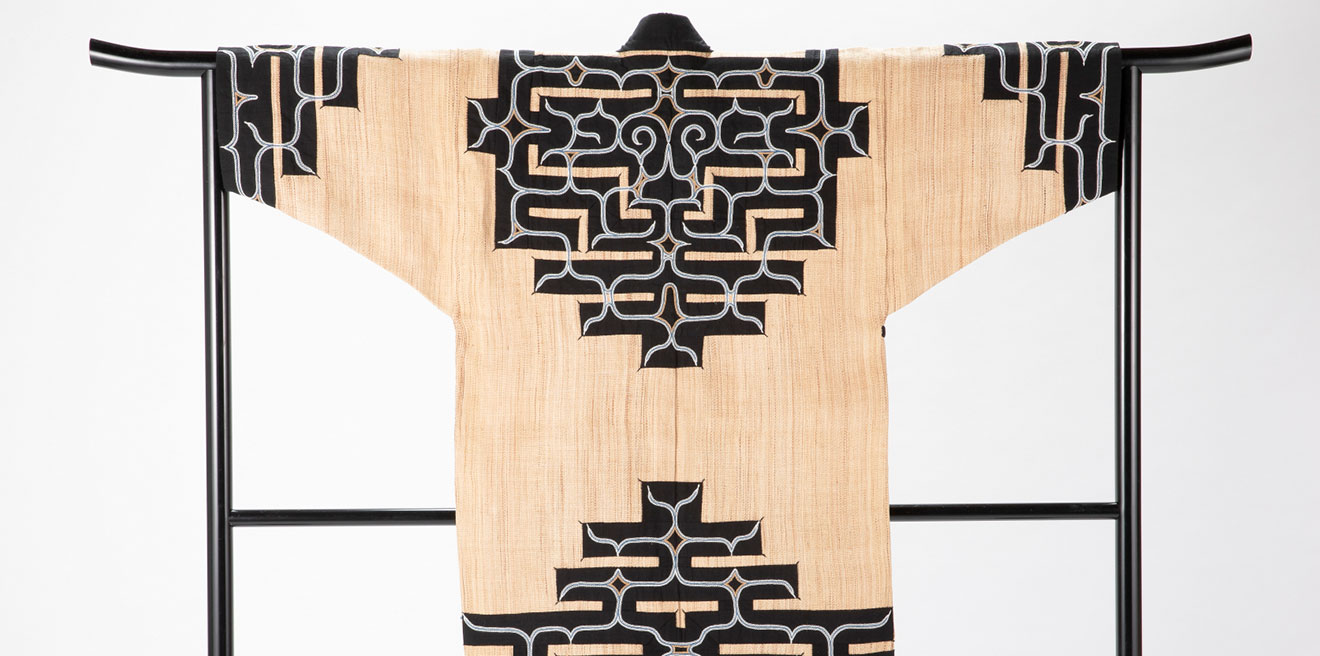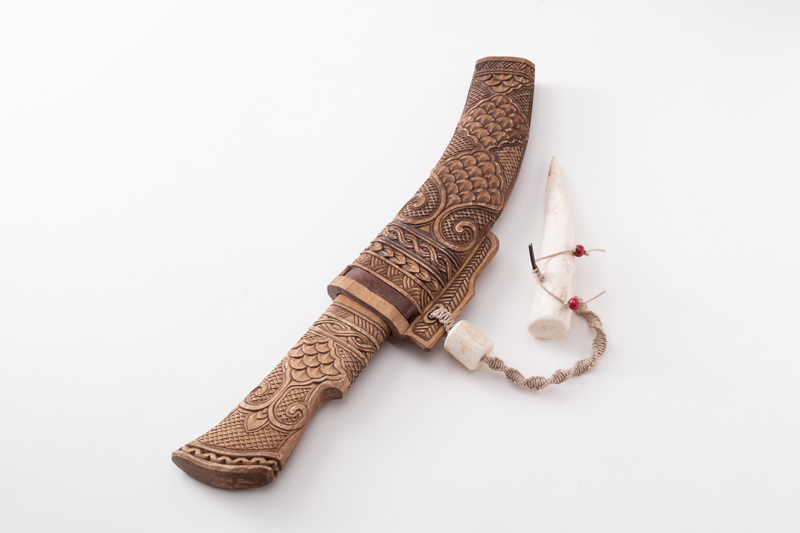
Makiri
Makiri are small double-edged knives with a wooden handle and scabbard engraved with intricate patterns.
They were always worn at the waist as important practical tools indispensable for all kinds of things like mountain work, cleaning and cooking game, and self-defense.
Making a makiri was considered men’s work, and men would often design and carve their own pattern.
Smaller makiri were called menokomakiri and were mostly for women.
A man would craft one to give to a woman he liked as a way to express his feelings.
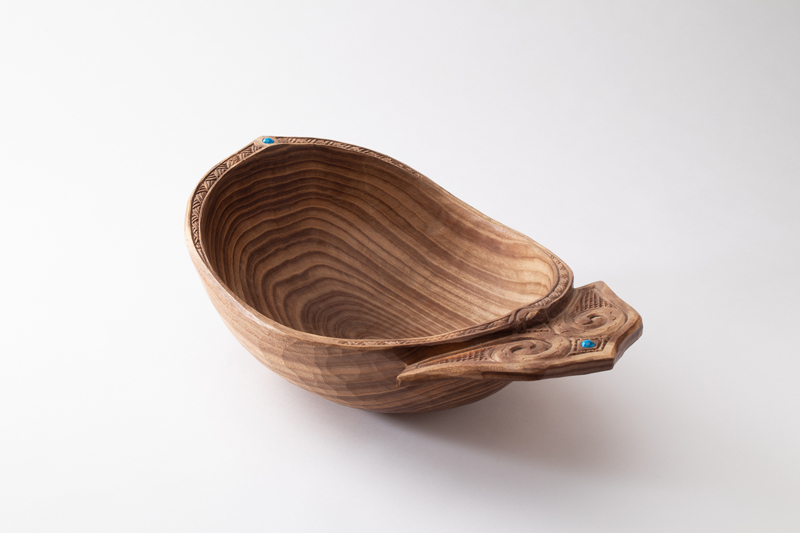
Nima
Nima are carved wooden serving vessels in a variety of shapes and sizes, from flat platters and plates to bowls.
Ita are also considered a class of nima, but most nima are less thoroughly decorated with patterns, and the dish or bowl shaped nima served as daily tableware.
The largest nima were used for making dumplings or mochi rice cake, dish washing basins, and more. Some nima had handles richly decorated with intricately designed patterns.
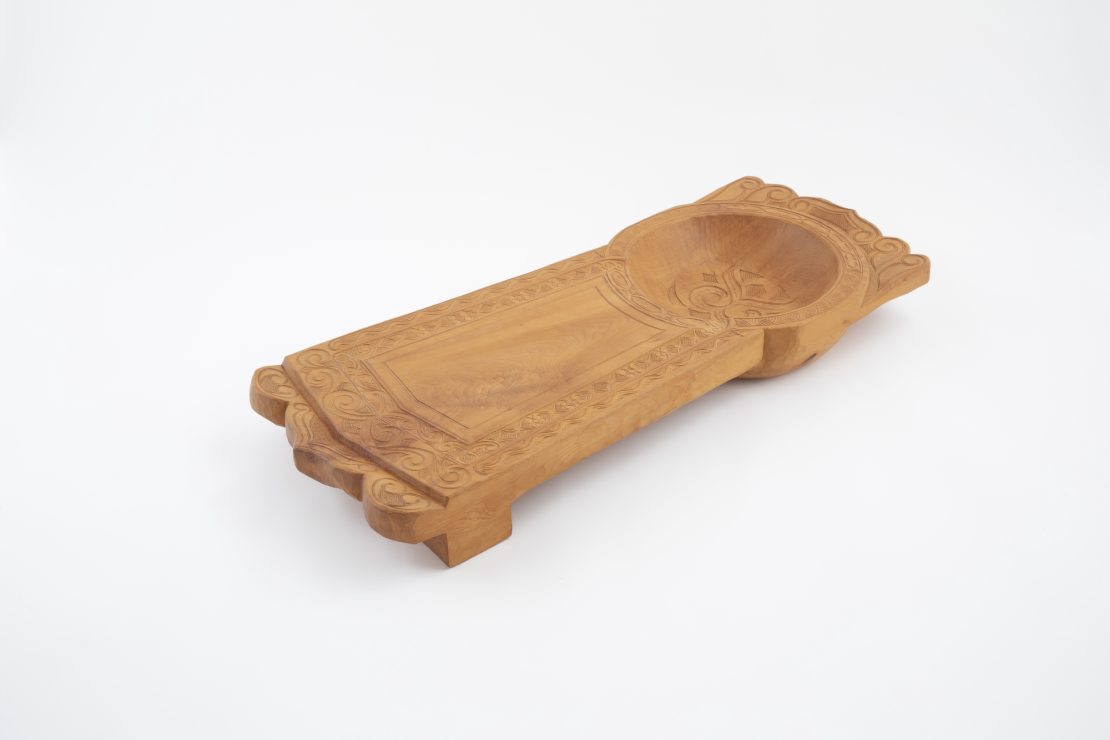
Menokoita
Menokoita, meaning “woman’s tray,” refers to a cooking tool that served as both a cutting board and a serving platter.
The left side serves as a cutting board for ingredients like fish, while the right serves as a tray to hold the cut items.
Some reached over one meter in size, and were used to prepare whole salmon or trout.
Smaller, tabletop menokoita were used to serve food to guests.
